Abstract
Rats were trained to discriminate between two bursts of random noise that differed in intensity. In a two-lever, discrete-trial procedure, correct responses were reinforced with brain stimulation, and incorrect responses produced timeout. Responding was studied as a function of the decibel difference between the stimuli, the probabilities of presenting the stimuli, the relative duration of timeout consequent upon the two types of incorrect responses, and the absolute duration of timeout consequent upon incorrect responses. The results showed that the distribution of responses between the two levers depended upon the stimulus probabilities, but were independent of either the absolute or relative durations of timeout. When the stimulus probabilities were varied, the response probabilities did not match the stimulus probabilities; when the relative durations of timeout were varied, the animals did not obtain the maximum rate of reinforcement per unit time. Instead, the animals distributed their responses so as to obtain the maximum number of reinforcements at each level of discrimination. In addition, the level of discrimination increased as a function of the decibel difference between the stimuli.
Full text
PDF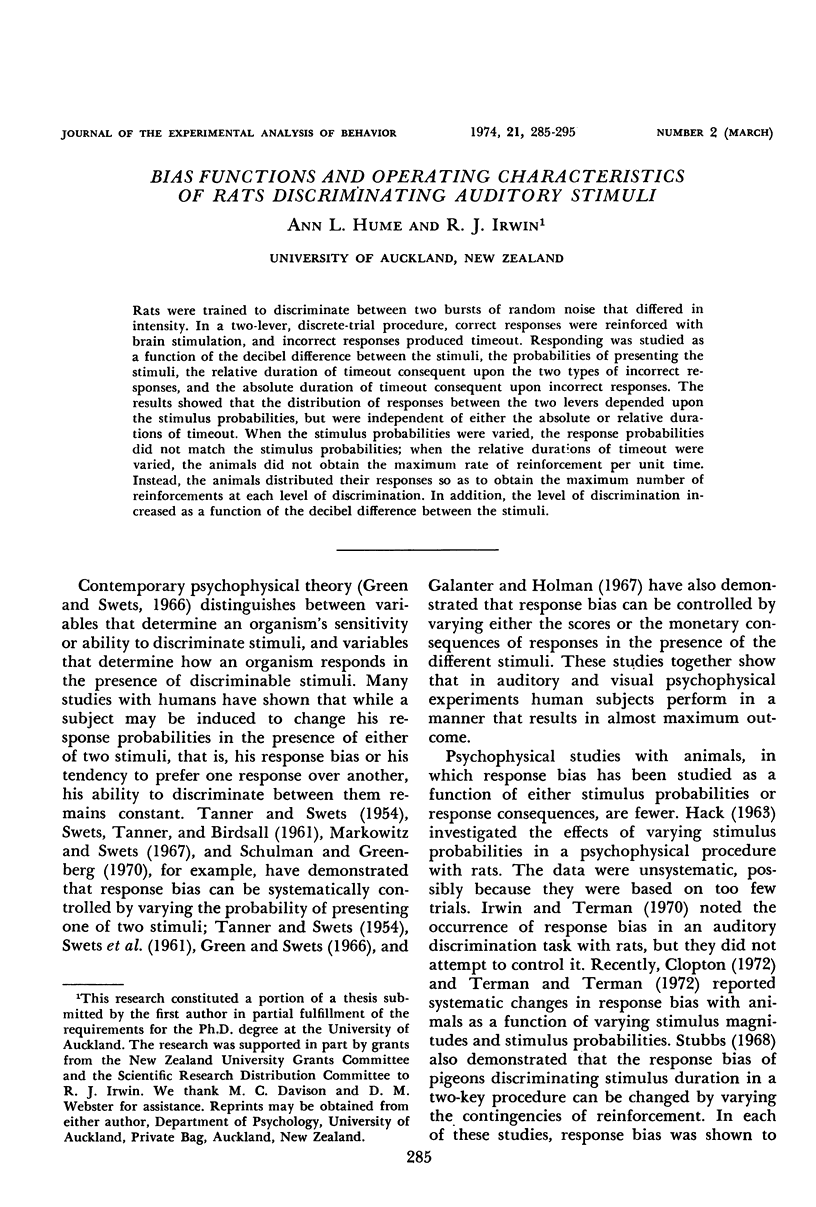
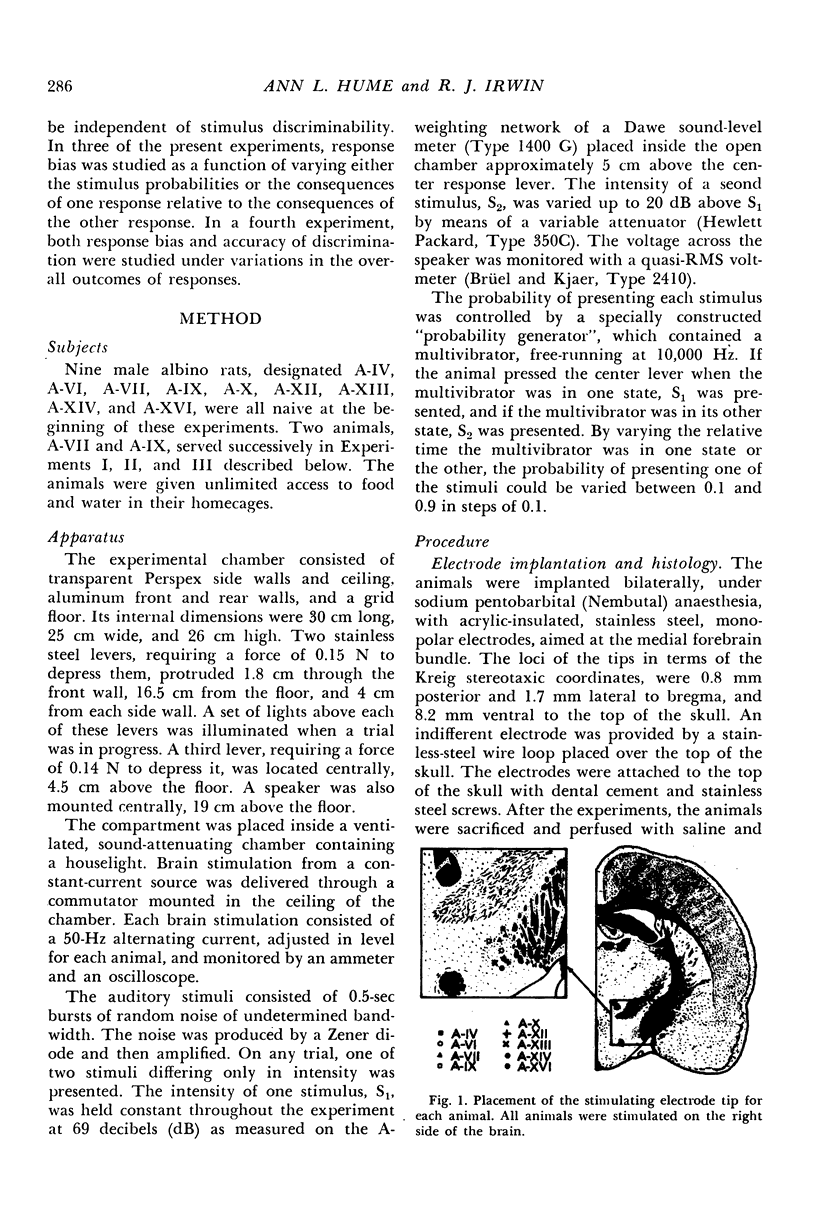
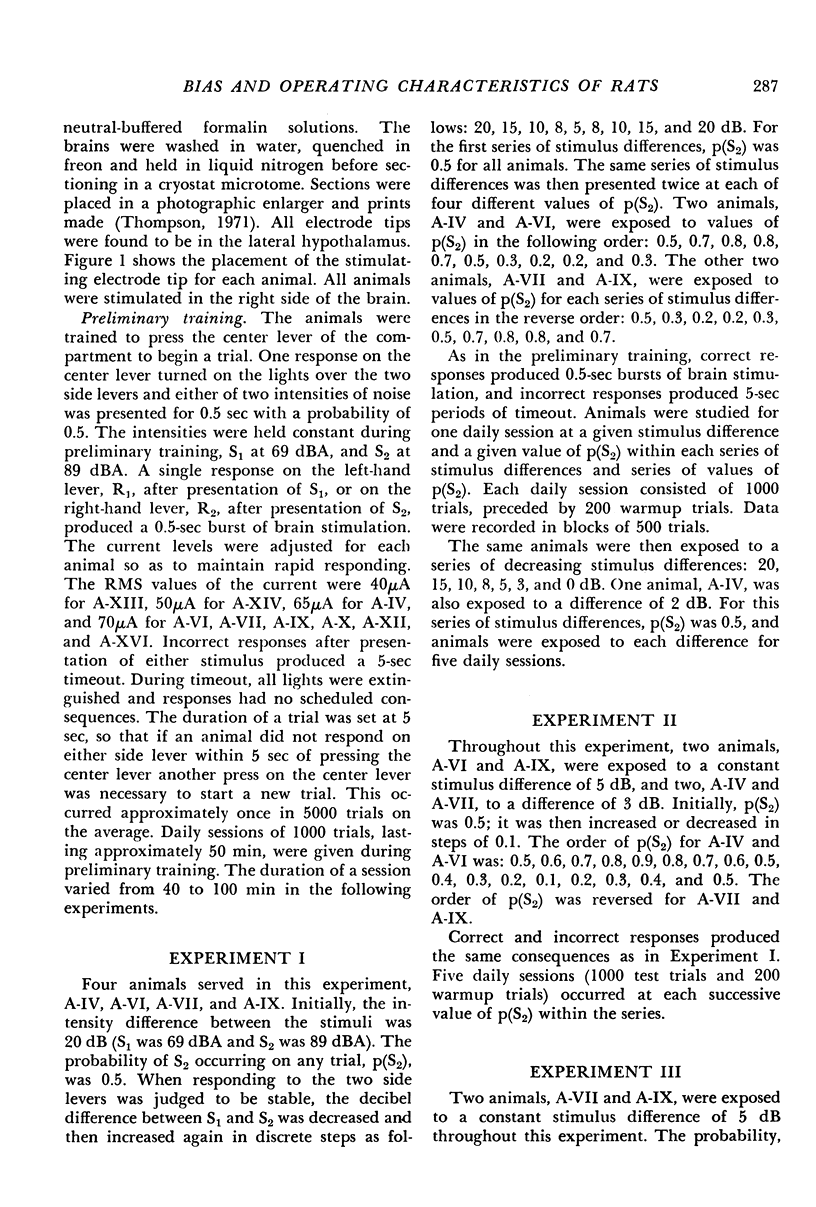
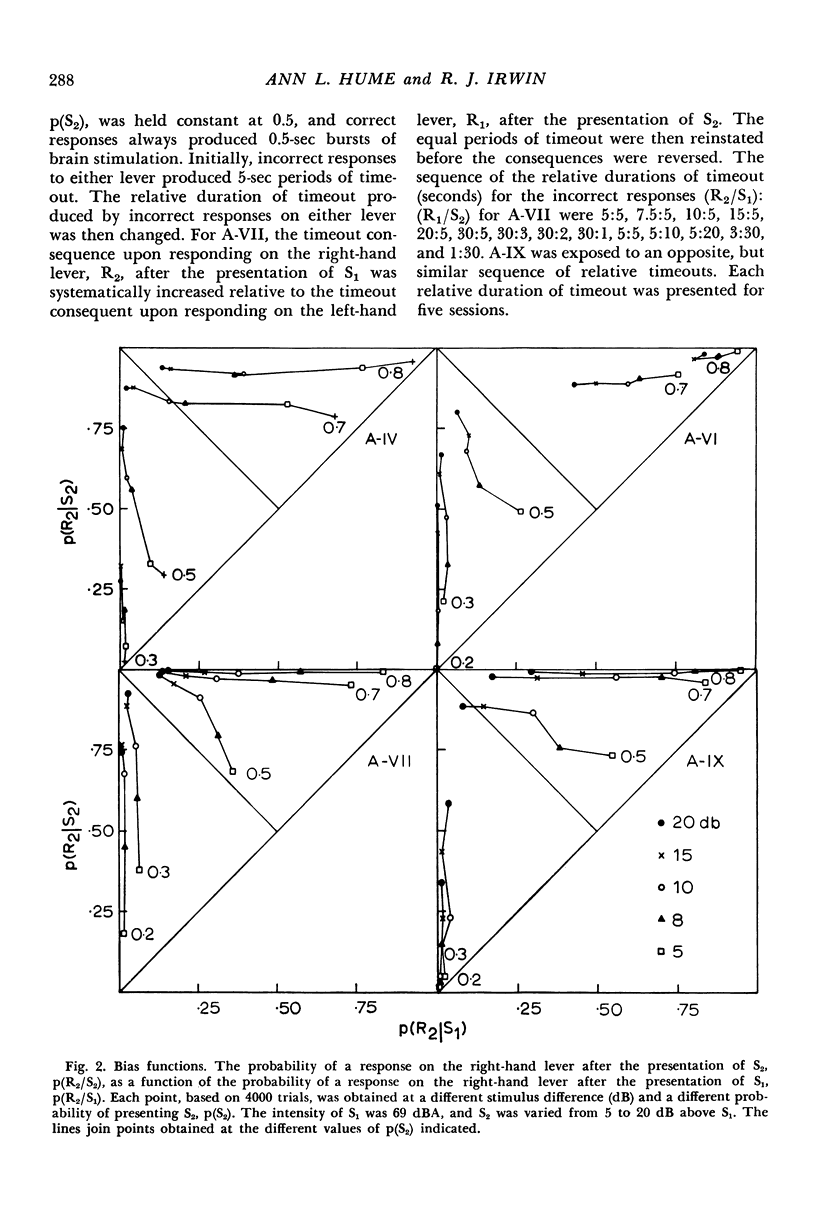
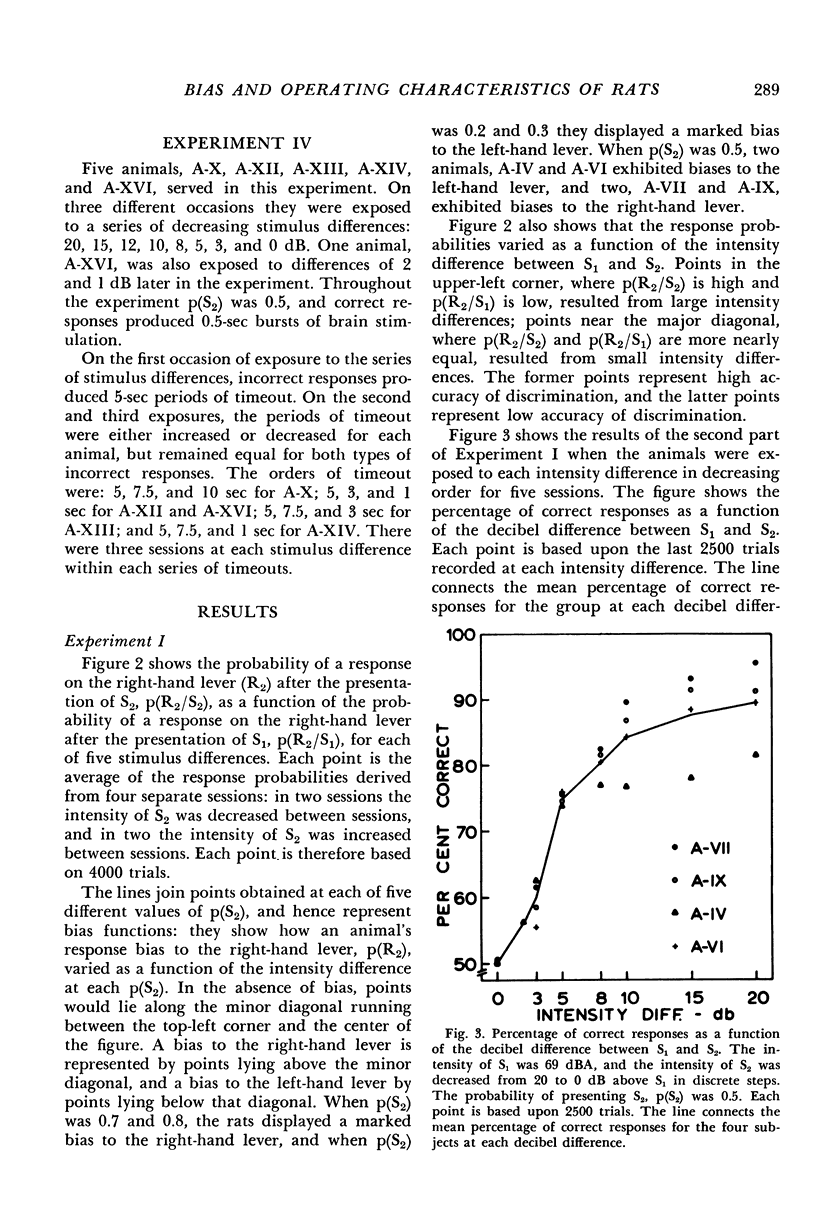
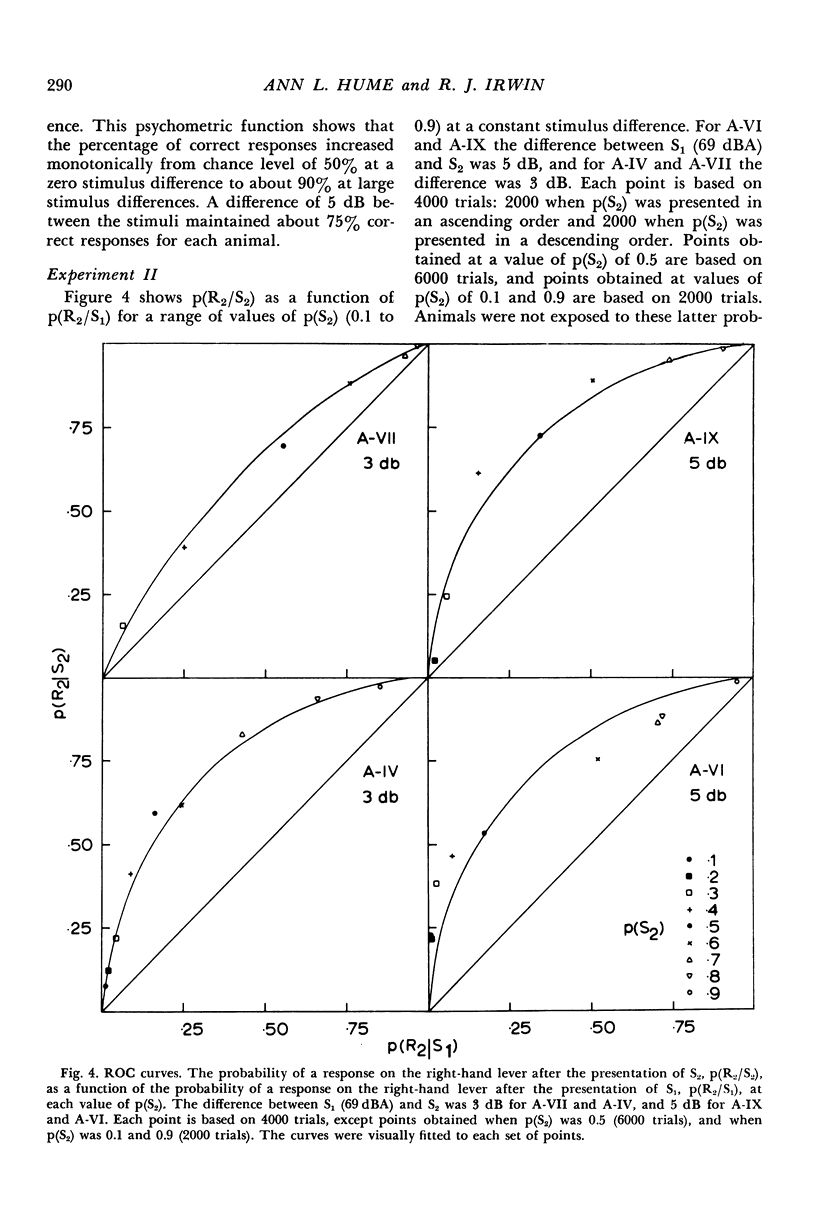
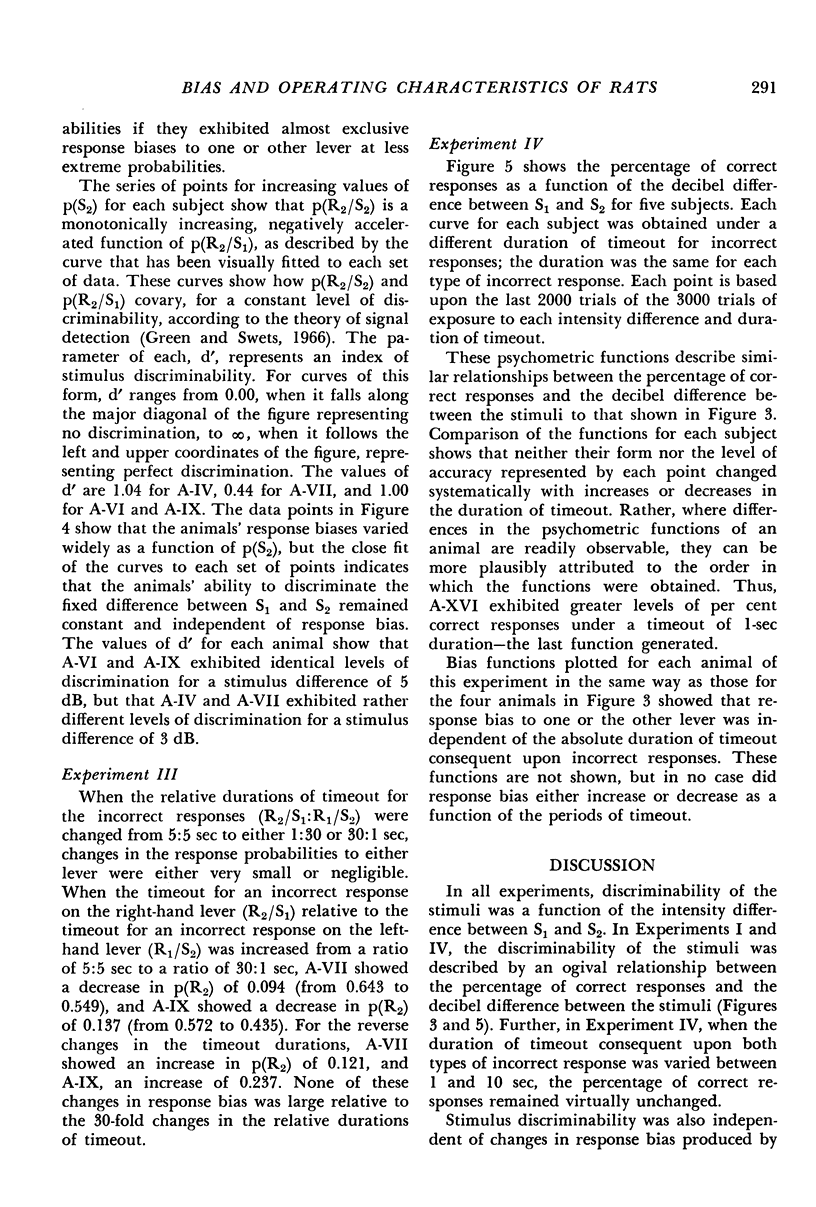
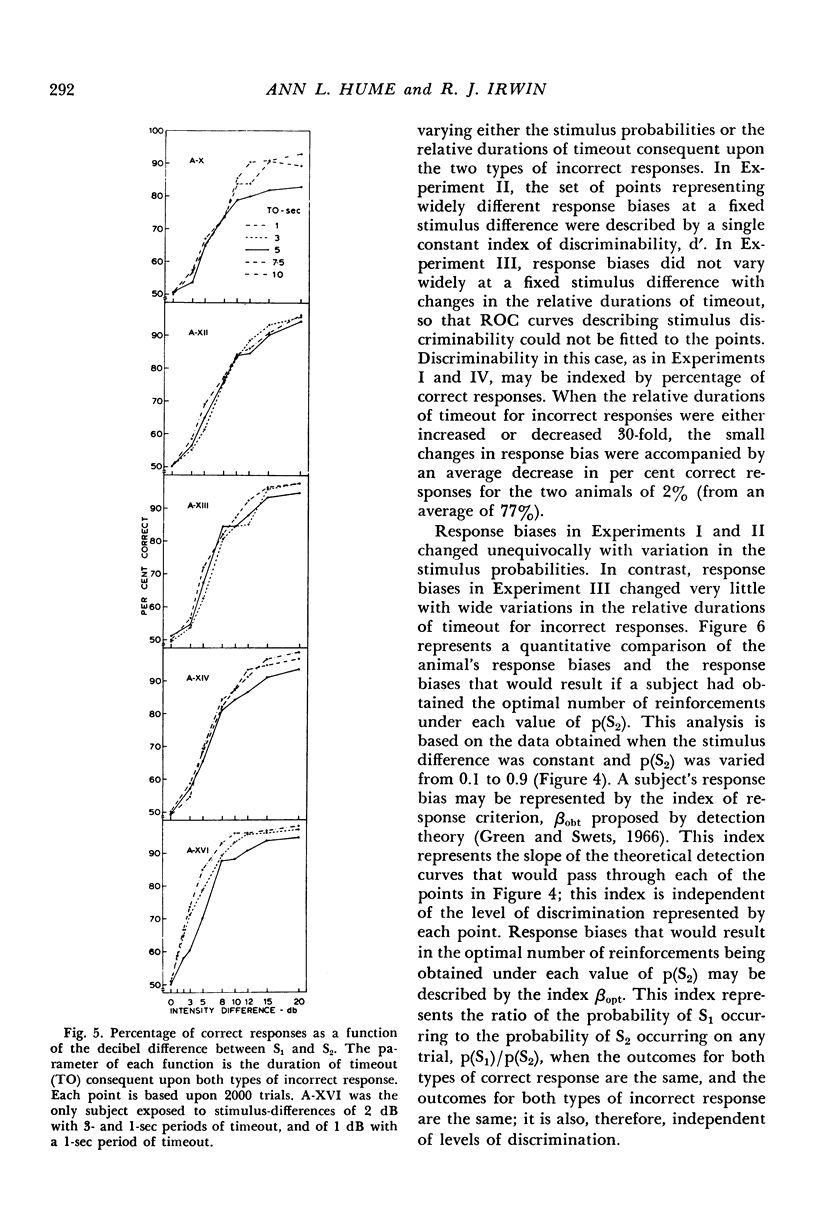
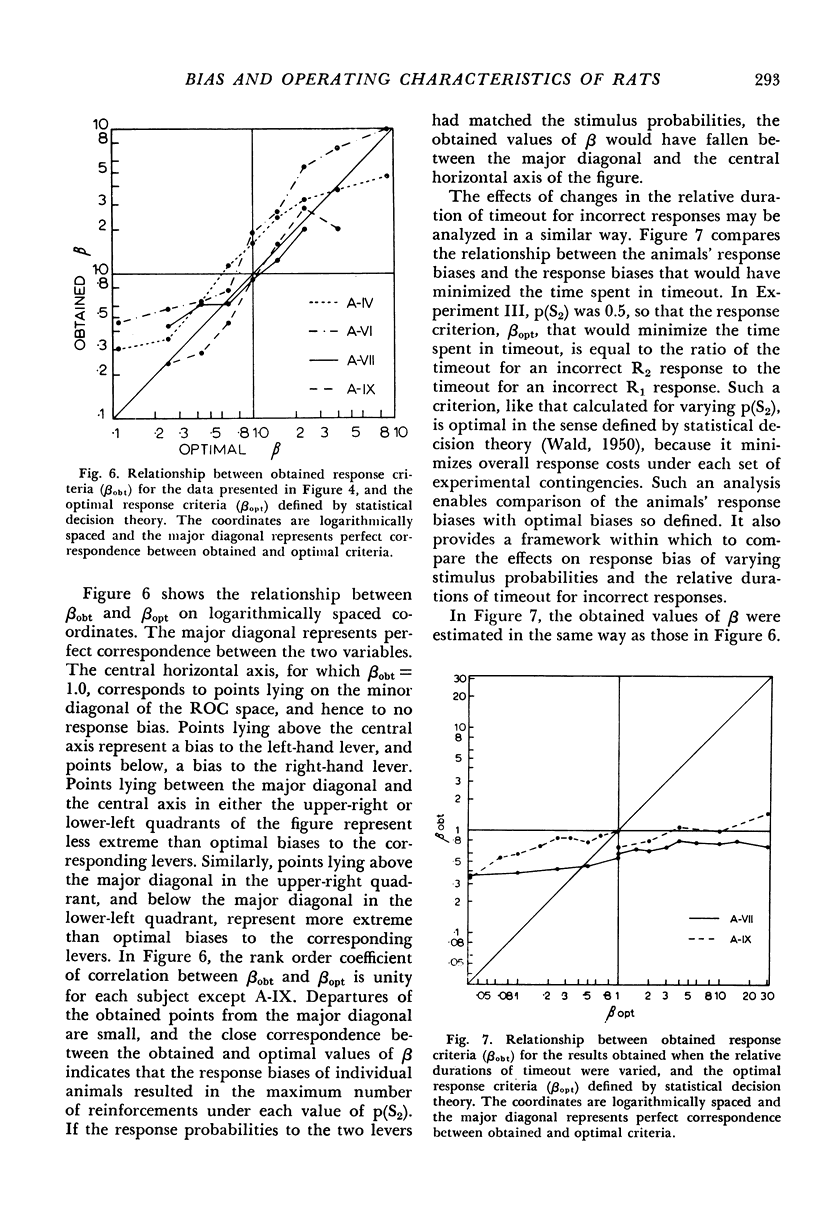
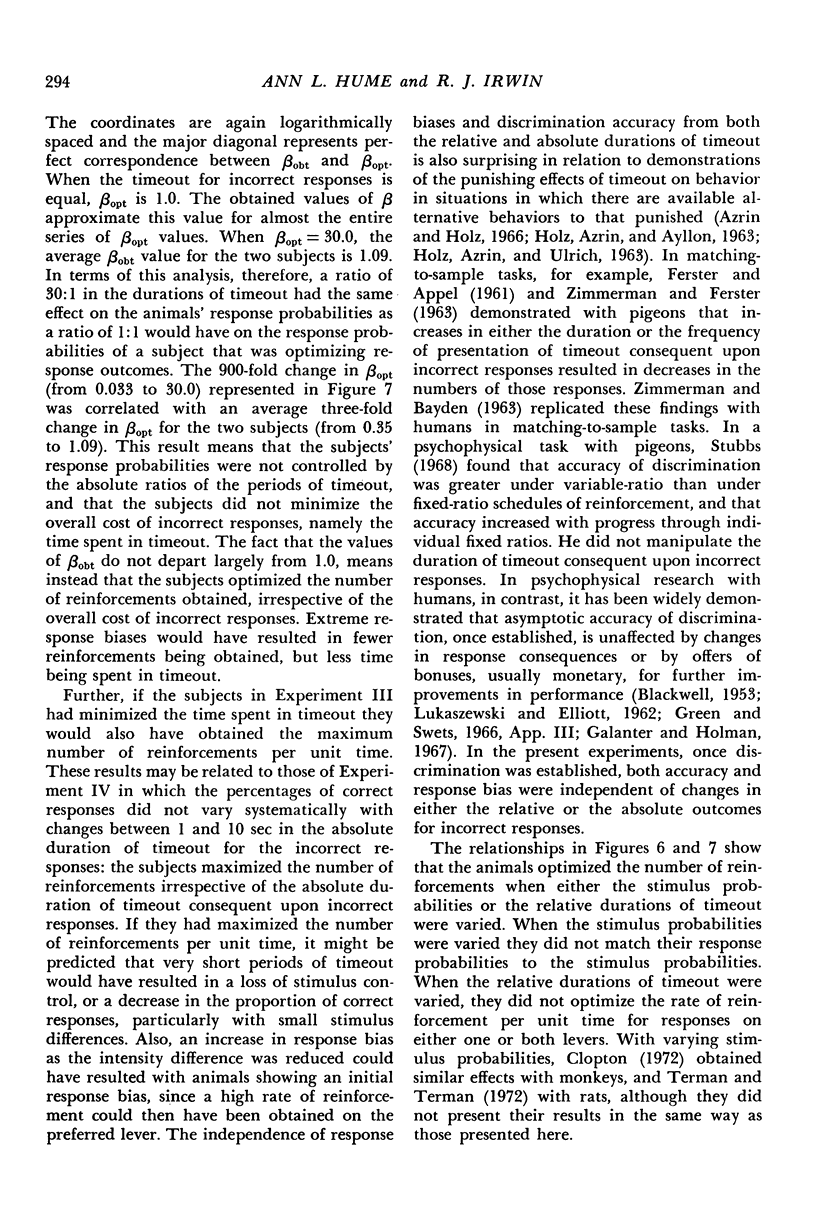

Selected References
These references are in PubMed. This may not be the complete list of references from this article.
- Clopton B. M. Detection of increments in noise intensity by monkeys. J Exp Anal Behav. 1972 May;17(3):473–481. doi: 10.1901/jeab.1972.17-473. [DOI] [PMC free article] [PubMed] [Google Scholar]
- FERSTER C. B., APPEL J. B. Punishment of S delta responding in matching to sample by time out from positive reinforcement. J Exp Anal Behav. 1961 Jan;4:45–56. doi: 10.1901/jeab.1961.4-45. [DOI] [PMC free article] [PubMed] [Google Scholar]
- Galanter E., Holman G. L. Some invariances of the isosensitivity function and their implications for the utility function of money. J Exp Psychol. 1967 Mar;73(3):333–339. doi: 10.1037/h0024275. [DOI] [PubMed] [Google Scholar]
- HACK M. H. Signal detection in the rat. Science. 1963 Feb 22;139(3556):758–760. doi: 10.1126/science.139.3556.758. [DOI] [PubMed] [Google Scholar]
- HOLZ W. C., AZRIN N. H. A comparison of several procedures for eliminating behavior. J Exp Anal Behav. 1963 Jul;6:399–406. doi: 10.1901/jeab.1963.6-399. [DOI] [PMC free article] [PubMed] [Google Scholar]
- HOLZ W. C., AZRIN N. H., ULRICH R. E. Punishment of temporally spaced responding. J Exp Anal Behav. 1963 Jan;6:115–122. doi: 10.1901/jeab.1963.6-115. [DOI] [PMC free article] [PubMed] [Google Scholar]
- Irwin R. J., Terman M. Detection of brief tones in noise by rats. J Exp Anal Behav. 1970 Mar;13(2):135–143. doi: 10.1901/jeab.1970.13-135. [DOI] [PMC free article] [PubMed] [Google Scholar]
- SWETS J., TANNER W. P., Jr, BIRDSALL T. G. Decision processes in perception. Psychol Rev. 1961 Sep;68:301–340. [PubMed] [Google Scholar]
- TANNER W. P., Jr, SWETS J. A. A decision-making theory of visual detection. Psychol Rev. 1954 Nov;61(6):401–409. doi: 10.1037/h0058700. [DOI] [PubMed] [Google Scholar]
- ZIMMERMAN J., BAYDAN N. T. PUNISHMENT OF S-DELTA RESPONDING OF HUMANS IN CONDITIONAL MATCHING TO SAMPLE BY TIME-OUT. J Exp Anal Behav. 1963 Oct;6:589–597. doi: 10.1901/jeab.1963.6-589. [DOI] [PMC free article] [PubMed] [Google Scholar]
- ZIMMERMAN J., FERSTER C. B. Intermittent punishment of Sdelta responding in matching to sample. J Exp Anal Behav. 1963 Jul;6:349–356. doi: 10.1901/jeab.1963.6-349. [DOI] [PMC free article] [PubMed] [Google Scholar]


